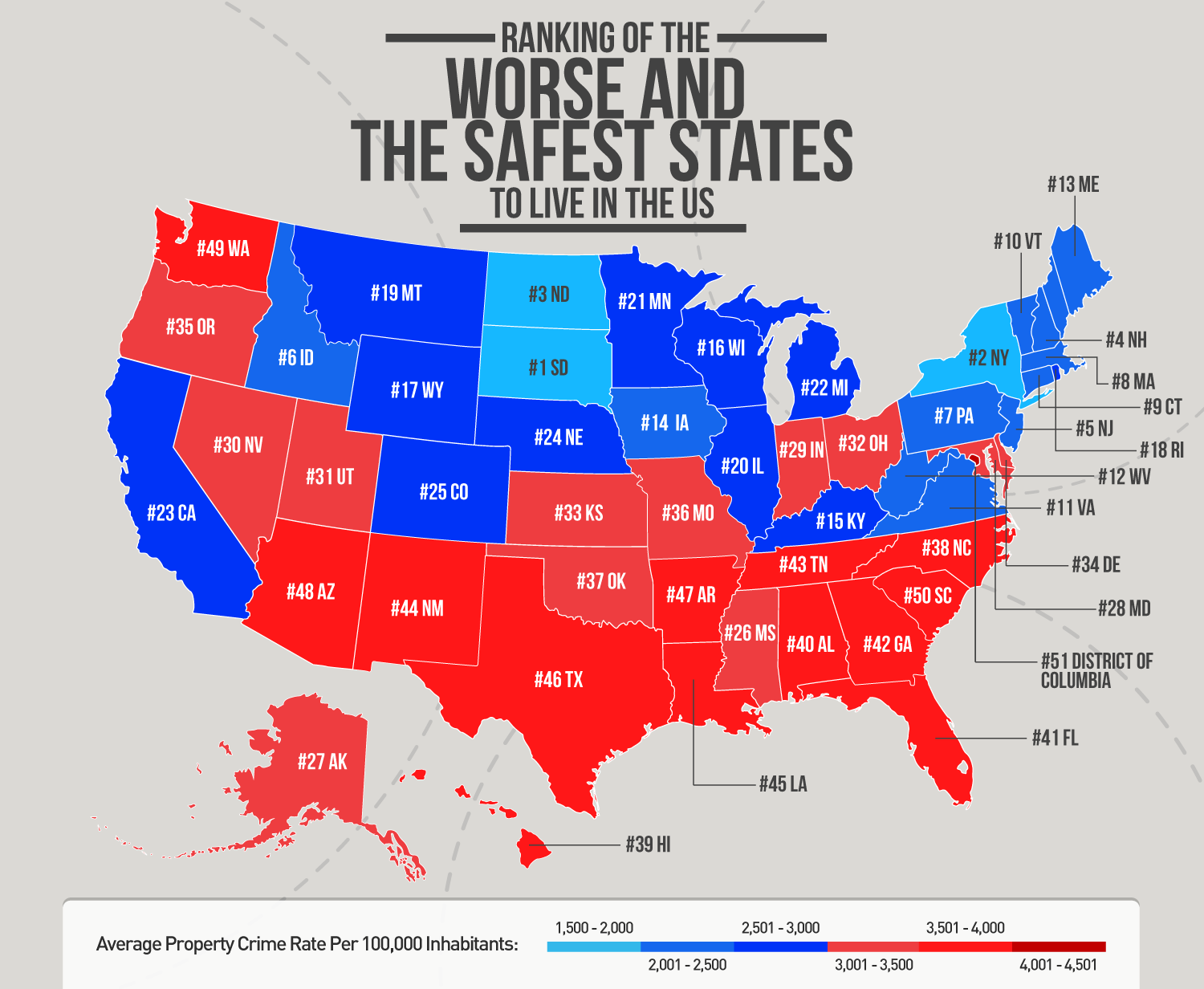Finding The Safest Haven: What Is The Safest State To Live In?
In today’s world, safety and security have become paramount concerns for individuals and families alike. With increasing crime rates in urban areas and natural disasters affecting rural locales, the quest for a safe place to call home has never been more critical. Therefore, when pondering the question, "what is the safest state to live in," it becomes essential to consider various factors such as crime rates, healthcare quality, and community engagement. This article seeks to explore these dimensions while guiding you toward the safest states in the United States.
Moreover, safety is not solely defined by the absence of crime. Elements such as access to emergency services, the presence of community support systems, and the overall quality of life play significant roles in determining how secure one feels in their environment. As we delve deeper into the states that offer the highest levels of safety, we will look at key statistics and personal accounts that shed light on what makes these states stand out.
Finally, let’s embark on this journey together to uncover the safest states to live in, keeping in mind that the definition of safety can vary from person to person. Whether you are considering a move, raising a family, or seeking a peaceful retirement, understanding what is the safest state to live in will provide you with the insights you need for informed decision-making.
What Factors Determine the Safest State to Live In?
When evaluating safety, several factors come into play, including:
- Crime rates (violent and property crime)
- Access to healthcare services
- Community engagement and support
- Natural disaster risks
- Economic stability
Which States Have the Lowest Crime Rates?
According to recent data, some of the states with the lowest crime rates include:
- Vermont
- Maine
- New Hampshire
- Idaho
- Wyoming
These states often report lower instances of both violent and property crimes, making them prime candidates for consideration when asking, "what is the safest state to live in?"
How Does Healthcare Impact Safety?
Access to quality healthcare is a crucial aspect of safety. States with robust healthcare systems can provide immediate assistance in emergencies, which significantly contributes to the overall sense of security. States that consistently rank high in healthcare access include:
- Massachusetts
- Hawaii
- California
These states not only boast excellent hospitals and clinics but also prioritize preventive care, helping residents maintain their health and well-being.
What Role Does Community Engagement Play?
A strong sense of community can significantly enhance safety. When individuals are engaged in their neighborhoods, they are more likely to look out for one another. States with high levels of community engagement often have programs and initiatives to foster connections among residents.
Are There States That Are Less Prone to Natural Disasters?
Natural disasters can threaten safety and security, making it essential to consider a state's geographical risks. States less prone to hurricanes, tornadoes, and earthquakes, such as:
- Maine
- Vermont
- New Hampshire
These states often experience fewer natural disasters, which contributes to their overall safety profile.
What is the Safest State to Live In Based on Recent Data?
According to recent studies and surveys, the title of the safest state often oscillates between the following contenders:
- Vermont
- Maine
- New Hampshire
Each of these states has unique attributes contributing to their reputation for safety, from low crime rates to community cohesion.
What Are the Personal Experiences of Residents in These States?
Personal anecdotes and experiences can provide valuable insights into what it is like to live in these states. Residents often cite strong community ties, low crime rates, and an overall sense of belonging as reasons why they feel safe in their environment.
How Do Economic Conditions Affect Safety?
Economic stability plays a pivotal role in shaping the safety of a state. States with strong economies typically enjoy lower crime rates and higher investment in public services, including law enforcement and healthcare. For instance, states like:
- Utah
- Idaho
- North Dakota
Demonstrate that a strong economy can lead to safer communities and a better quality of life.
Conclusion: What is the Safest State to Live In?
In conclusion, determining what is the safest state to live in requires a multifaceted approach that considers crime rates, healthcare access, community engagement, and economic conditions. While states like Vermont, Maine, and New Hampshire consistently rank high in safety, the final choice often depends on personal priorities and values. Ultimately, safety is not just about statistics; it’s about finding a place where you can thrive and feel secure.
Exploring The Vibrant Essence Of JoJo NYC
Protect Your Outdoor Faucet: The Ultimate Guide To Outdoor Faucet Covers
Matthew Perry's Net Worth In 2024: A Closer Look At The Friends Star's Finances



